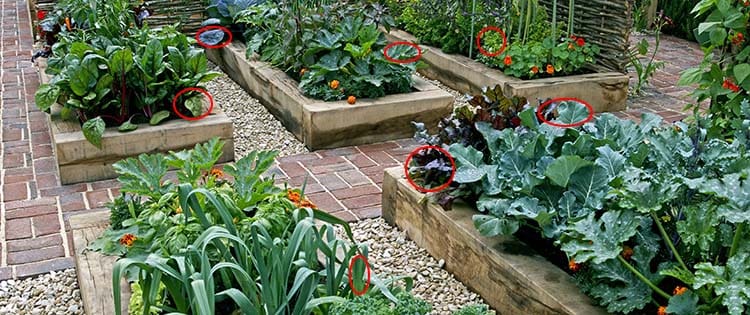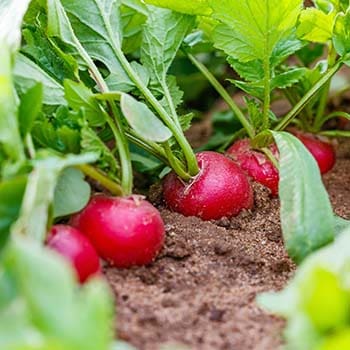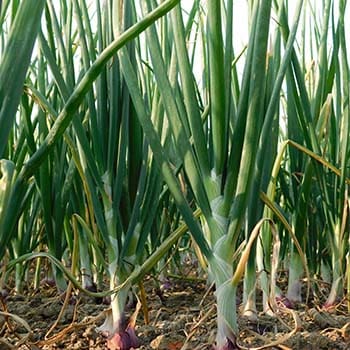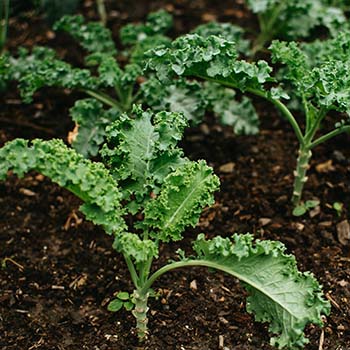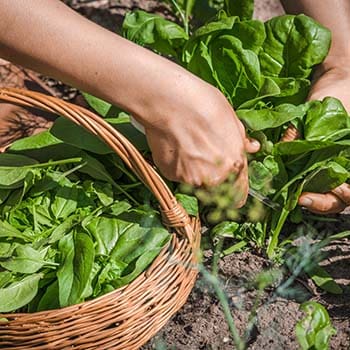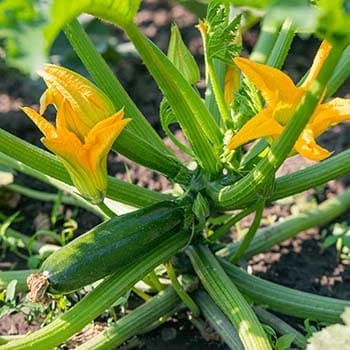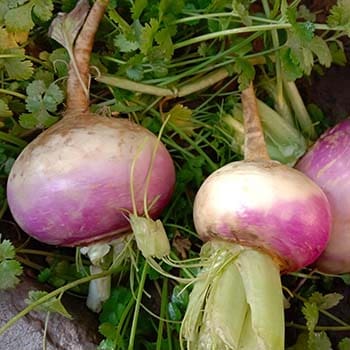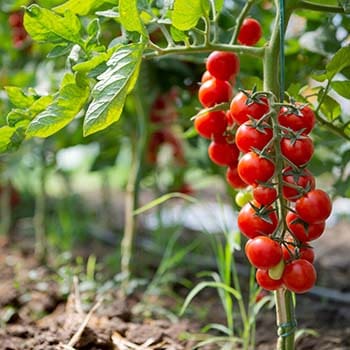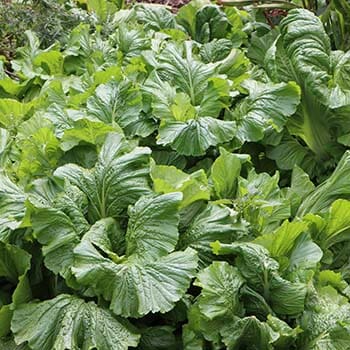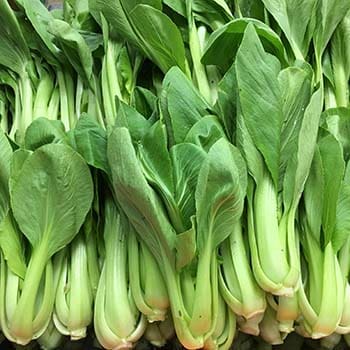Fresh fruits and veggies are a staple of our diet. They fuel our bodies and sharpen our minds, but what happens if we cannot access this precious resource?
Growing fast-growing vegetables is crucial in times of crisis as they provide a quick and reliable source of fresh produce. They require less time and resources to grow, making them a practical solution for food security in emergencies.
Thankfully, several vegetables can be grown and harvested quickly, allowing you to have fresh food on hand if you need it.
#1. Arugula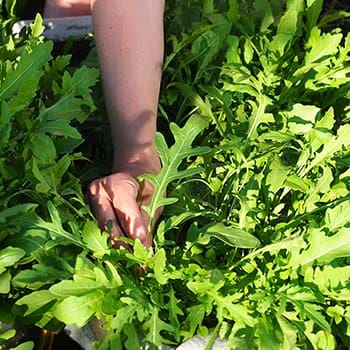
Arugula is exceptionally easy to grow. This plant requires little to no gardening skills and takes around two weeks to reach a harvestable state. Arugula is an excellent option in a crisis and is easy to grow in any environment.
Arugula reaches full maturity in 40-50 days but can be trimmed and consumed within approximately two weeks (or when leaves are around 3 inches long) should you need something fast.
To grow arugula, you will sow the seeds and wait. Arugula is not a picky plant, and it will grow almost anywhere.
While arugula prefers cool temperatures and is best grown in the spring or late summer, it will thrive in most environments as long as there is a cool, shady period throughout the day.
When caring for arugula, you will want to ensure that it stays moist by watering it regularly. This plant should be in a location that provides direct sunlight and some afternoon shade.
#2. Radishes
Planting radishes is another option that yields quick results.
When radishes are placed directly into the soil a ½ inch deep and two inches apart, they will grow in as little as four weeks. You will want to plant your radish in a sunny area or somewhere with partial shade.
Too much sun can damage the plant, but too little will cause it to grow large on top while staying small on the bottom.
Best planted in the spring, radishes love cool weather. In fact, you can plant your first batch of radishes a full two weeks before the final frost of spring because they hold up well in cold weather and will not be damaged.
To encourage radish growth, you want to keep the bed wet but not soaked. Water the area evenly and frequently to ensure a healthy crop. Most people suggest watering the site every two days to keep the plants moist and healthy.
The best part about radishes is that they grow quickly and can be harvested within only a few weeks. A general rule of thumb is to allow a radish root to reach around one inch before harvesting the plant.
If your radish plant starts to grow flowers, it is either time to pull the plant or allow it to sprout seeds to germinate.
#3. Green Onions
Green onions are an excellent option for use in cooking or salads. This popular plant is easy to grow and takes as little as ten days to reach harvest.
The shoot of a green onion plant can be continuously cut back throughout the season, providing you with a regular, ongoing supply as needed.
You can grow green onions from seeds or from the base of onions you have already used by placing the white bottom of the onion into the soil of a planter or directly in the ground while leaving a small portion showing through the top.
Green onions can withstand the cold but will not grow as quickly in temperatures that produce frost. Green onions require around six hours of sunlight per day, and their bed must remain moist. Be sure to water the plants often to encourage a healthy harvest.
While some people opt to fertilize their onions every two to three weeks, you can produce robust and healthy onion plants without fertilizer as long as they have water and sunlight.
Green onions can be placed relatively close together and thrive in small environments like a pot on your kitchen window sill. Place each plant or seed approximately one inch apart to give the roots enough room to gather nutrients and grow.
#4. Kale
Kale is essentially a form of cabbage that has gained popularity in recent years.
High in nutrients, kale is an excellent option for a fast-growing vegetable used in various meals. Growing kale will take approximately two months from seed to harvest and is best planted in late winter or early spring.
Kale can be planted three to five weeks before the last frost in your area, or in the late summer, three to six weeks before the final fall frost. It can grow in various planters or spaces, from planter pots to garden beds. This plant is hearty enough to survive and thrive almost anywhere.
Kale should be placed around 1 ½ to 2 feet apart to allow the roots to spread and absorb all the nutrients it needs. Plants should be placed around ½ inch deep, and no support structure is required.
Kale plants do best in direct sunlight and should receive six or more hours of sun per day. Watering should occur regularly, with the soil staying moist but not soggy.
Kale plants will take approximately two months to mature from their seed state. However, young kale leaves can be harvested early and used in salads or cooking. Removing older outer plants will also allow the center of the plant to continue production.
Fresh kale can be easily stored in the fridge for a week, frozen for later use, or used to create cuttings that enable you to grow new plants.
#5. Spinach
Unlike some other seedlings, spinach will grow in partial shade and requires far less sunlight than other plants.
Three to six hours of daylight is enough to produce healthy, robust spinach plants that are ready to harvest in as little as a month. The ideal site for growing spinach is a relatively sunny place.
You can also grow spinach in pots if you desire, which is especially useful if you live in a hot, dry climate. When planting spinach in pots, ensure ample drainage for excess water to be released as needed.
Spinach plants should be planted ½ to 1 inch deep and spaced 12 to 18 inches apart. You can separate thin plants that have sprouted to around six inches apart once they have begun to grow.
While spinach does best in direct sunlight, it will grow in partial shade. The soil of your spinach plants should be kept moist, and organically rich soil will encourage growth.
Regular watering is essential in warmer climates where the soil may dry out fast. Spinach will require 1 to 1 ½ inches of water per week and prefers temperatures around 50 to 60 degrees.
Spinach will take around 4 to 6 weeks to reach a harvestable state. You can trim spinach in a way that allows it to regrow, often referred to as the ‘cut and come again’ method.
Spinach can be eaten raw or cooked and is a popular vegetable in many recipes. You can easily prune the leaves of spinach throughout the season, providing you with a tasty meal and keeping the plant healthy and fresh.
#6. Zucchini
Zucchini likes warm temperatures and does best when the weather is warm.
Direct sunlight is best for large zucchini, but partial shade will work fine if you only grow for the leaves and stems. Aim for around 3 to 6 hours of full sunlight wherever you choose to plant your zucchini.
It takes zucchini around five to six weeks to grow to full maturity, and it should be planted two to three weeks after the last frost in your area. Zucchini does not do well in the cold, and even small amounts of frost will damage the healthiest of plants.
Zucchini is ready to harvest when it reaches around four to six inches in length, and all parts of this plant are useable, making it an excellent addition to any garden. Many gardeners say that zucchini practically grows itself, and plants can produce an ample harvest without much care.
This fast-growing vegetable will provide you with an ample harvest within 40 to 50 days, provided it is well-watered to keep the soil damp. A deep watering once a week is usually enough in most environments.
Zucchini loves the sun, and planting in a sunny area with rich soil will encourage crop growth. Keep zucchini plants a ½ inch deep, and be sure to space them around two to three feet apart.
#7. Turnips
For centuries, turnips have been grown in gardens around the world. This popular root vegetable is easy to grow and quick to mature.
Turnips thrive in cool temperatures and are best planted two to three weeks before spring’s final frost and also do well in the fall months.
Turnip seeds should be placed in their final resting place as they do not transplant well. Ensure seedlings are around six inches apart and keep the soil cool and damp with regular watering.
Smaller spring turnips will be ready to harvest in as little as four to six weeks, and tender greens can be harvested in as little as two.
Turnips grow best in direct sunlight, so choose a well-lit area for these plants. Turnips also require soil that drains well but remains somewhat damp.
Watering turnips is vital for good rooting, and around one inch of water per week is usually sufficient. The better the moisture in the soil, the more uniform the turnip will be.
#8. Cherry Tomatoes
In as little as two months, you can have an ample harvest of these tiny and delicious morsels.
Cherry tomatoes grow so abundantly and with such little effort that you will be giving them away to anyone you see. Choose a sunny location that gets around 8 hours of direct sunlight a day.
You can quickly start cherry tomatoes indoors and move them outside after the fear of frost is gone in your area.
One of the most popular garden crops, cherry tomatoes are easy to care for and create a plentiful harvest for any gardener. You can also grow these plants in containers and get similar results to growth outdoors.
Plants should be spaced a few feet apart and covered in ¼ inch of soil. Tomatoes of any type do require a structure to encourage vine growth. A simple tomato cage will allow vines to climb and spread in the sun of your garden.
Light is the heart and soul of cherry tomato gardening. This plant should get plenty of direct sunlight to encourage vegetable growth. Watering is also essential to success, and you should aim to water this plant deeply every few days.
#9. Mustard Greens
Easy and fast to grow, mustard greens can be an easy option for gardening and getting greens. Mustard greens require a well-watered area, as they turn unpleasant if allowed to dry.
While mustard greens are not as hardy as kale or other plants, they can withstand a light frost.
However, this plant is sensitive to heat and does best in the spring and fall.
Mustard greens should be harvested when the leaves are large enough to eat.
#10. Cress
Cress is a green popular among gardeners because of its peppery flavor and fast growth. Often used in salads and soups, cress can grow throughout the winter months, providing you with a year-round microgreen option.
This plant is easy to grow indoors, and seeds can be germinated on a tray covered in a wet paper towel.
Many people find the pepper taste of cress becomes too strong during warmer months when grown outdoors, and thus, this is an excellent indoor winter option to get needed greens.
If growing cress outdoors, choose an area with a good amount of shade and ensure that you water the crop regularly.
Cress seeds will sprout in approximately five to fifteen days and should be thinned to six inches apart once they reach an inch or two in size.
#11. Bok Choy
Yet another quick-growing vegetable that is popular among gardeners is bok choy. It should be planted in partial shade and watered consistently to encourage healthy growth.
Depending on the weather in the area, bok choy should be ready to harvest in approximately 45 to 60 days.
There are two varieties of bok choy, regular and baby bok choy. Both types are planted in early spring for harvest in early summer. This plant can also yield multiple crops if properly trimmed for growth encouragement.
A well-draining location with rich, fertile soil is best for bok choy. Plants should be placed a ½ inch apart and around ¼ inches deep in a sunny spot, primarily if you aim for a fall harvest. While sunlight is essential to any plant, bok choy does well in areas that have partial shade.
Leaves from a bok choy plant are harvested from the outside of the plant, while interior leaves are left to mature and grow further.
Once all leaves have been gathered, you can cut the plant one inch from the base, and it will often resprout. The resprouted plants will be smaller in size but equally delicious.
This article first appeared on Ask A Prepper.
You may also like:
Veggies You Only Plant Once And Harvest Forever
The Most Sought Out Plant in a Crisis (Video)
